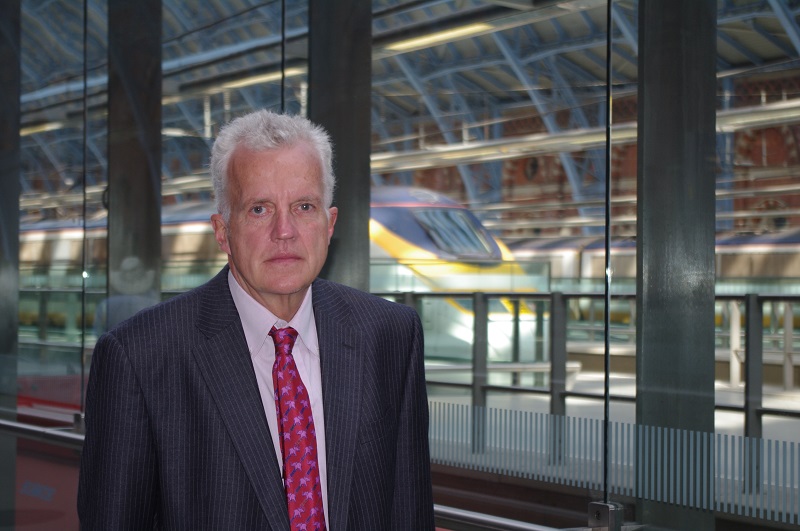If there was an area of policy that the government could opt out of, there is no doubt that Labour would choose transport. Since 1997, there has been a series of unfortunate events ranging from rail disasters such as Ladbroke Grove and Hatfield to the fuel crisis of September 2000, and failed initiatives such as the 10 year transport plan and the creation of the Strategic Rail Authority, all of which remain unleavened by any obvious areas of success. The recent publication of the revision of the ten year strategy, The Future of Transport, and the rail review, The Future of Rail, highlights the extent to which the government really has no sense of direction on the transport question.
Take the rail review. Its centrepiece is to abolish the Strategic Rail Authority, the body created but four short years ago to sort out the rail industry. The reason: it was the wrong sort of organisation. The review says it ‘could never have full responsibility for determining the Government’s rail strategy, because that is a role for Ministers…able to take decisions on rail in the context of a wider transport policy’. Well, euh, did not John Prescott and his civil servants notice that when they created the SRA so recently?
Much of the work of the SRA is now to be taken back in-house by the Department for Transport, though it is likely that a new Railways Agency will be created as part of the Department. The Department was, however, too embarrassed to make that announcement because it would have looked simply as if one agency were being replaced by another. Taking such direct control over the railway is quite a high risk strategy for ministers because they will be seen to be responsible for anything which goes wrong even though services will continue to be provided by the private sector. Indeed, the railways, which have a political importance far greater than their market share of passenger transport – 6 per cent – would suggest, have been one long policy disaster area for New Labour. They cost five times more — £5bn annually – in taxpayers support compared with the days of British Rail, and yet there are nearly twice as many late trains.
It is those bald figures which prompted the review in the first place, but it is difficult to see how any of the proposed solutions will resolve the fundamental problems. The government is to give Network Rail the central role in day to day operations on the railway. This is the ‘not for profit’ company set up out of the ashes of Railtrack which is spending twice as much as its predecessor did before the Hatfield train crash on running the railway. While part of this extra expenditure may be justified by the greater amount of work being done, handing over responsibility to what appears to be such a profligate organisation has raised eyebrows within the industry.
Moreover, there is much detail still to come in exactly how the contracts between the government and Network Rail, and between the latter and the train operators will function. In particular, how will the new Office for Rail Regulation ensure that the railway is being run for the benefit of passengers and not the engineers who dominate Network Rail’s thinking? But if the railways are a headache for the government, the overall transport situation is a bigger one. In 2000, Prescott (him again) published a ten year strategy for transport setting out some rather unambitious targets but which, at least, had the benefit of being backed by some hard figures, a brave attempt to plan a decade ahead.
Now the revised version of the document, The Future of Transport is a bland exposition of high minded principles (‘our aim over the next 20 to 30 years is to increase cycling and walking’ and ‘the government is committed to supporting industry by helping to ensure that goods can be moved freely, reliably and efficiently’) with most of the numbers now removed and very few commitments to any major projects, either roads or public transport. Tram schemes in Manchester, Leeds and south Hampshire, for example, have been shelved while the future of Crossrail still remains in doubt. Only the East London Line Extension’s future appears to be assured, and that will be built under the aegis of Transport for London. The big idea is road user charging. While a universal country wide scheme is a decade away, the document encourages local councils to follow London’s example. There are, too, some minor measures to encourage bus use, but overall there is little to excite and even less to win over the voters.
What both these documents lack is any theoretical underpinning. What are the railways for and what is the vision for them? Should we be facilitating movement as much as possible or paying more attention to the environmental damage? Should we encourage environmentally friendly modes such as rail, compared with the car? Instead, they are a testimony to the government’s desire to just ‘muddle through’ on transport, a subject in which Tony Blair has never taken any interest. In terms of the electoral effect, he is probably right as few votes ultimately are determined on transport, despite the number of animated pub discussions on the issue. In terms of the future of Britain, however, he is wrong.
